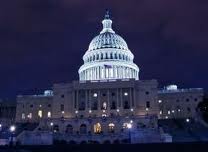by John Maudlin,
from Maudlin Econommics,
4/10/20:
As I pointed out four weeks ago, this is the most massive deflationary shock of all time. The Federal Reserve has rightly intervened in order to prevent the absolute certainty of a deflationary depression.
I quoted Milton Friedman above where he posits that “… inflation is always and everywhere a monetary phenomenon.” And then I said, “Well, maybe…” During the timeframe in which he and his colleague Anna Schwartz did their famous study, there was clearly a correlation between money supply and inflation. What is not often noted is that the velocity of money (i.e., the rate at which money changes hands) was stable during that time.
I am not going to do a 30-page academic study to explain why that is important. Just accept that it is. When the velocity of money is falling, monetary policy which would otherwise cause inflation doesn’t seem to do so.
Here is Lacy Hunt’s latest velocity chart. You have to go back to 1949 to find a time when it was lower than today, and it was actually rising rapidly off the postwar lows. This was before the coronavirus shutdowns. Let me crawl out on a limb and suggest that the velocity of money is now going to drop even further. Deflation is not your friend.

Lacy Hunt told me in an email and then telephone call that this last $2.2 trillion is not money printing. They are simply buying already existing bonds, not unlike QE in the past when the Federal Reserve bought US government bonds. This is not like Venezuela, Argentina, or Zimbabwe. Not even close.
Remember this chart I’ve used a few times in the past year or two? Where I naïvely assumed a 2020 recession would result in a $2 trillion deficit?

Wow, was I an optimist. The deficit this year will likely be $4 trillion-plus.
it should be clear that we cannot turn a switch to bring it back. How soon will we feel like going back into large crowds, restaurants, movie theaters, sporting events, hotels, vacation destinations, and all the other areas where we congregate as human beings? Certainly, some of the economy will start looking normal. But how many workers will it need?
At some point supply and demand will balance, but I don’t think it will be in three months. Three years? Maybe.
More From Maudlin Econommics:












